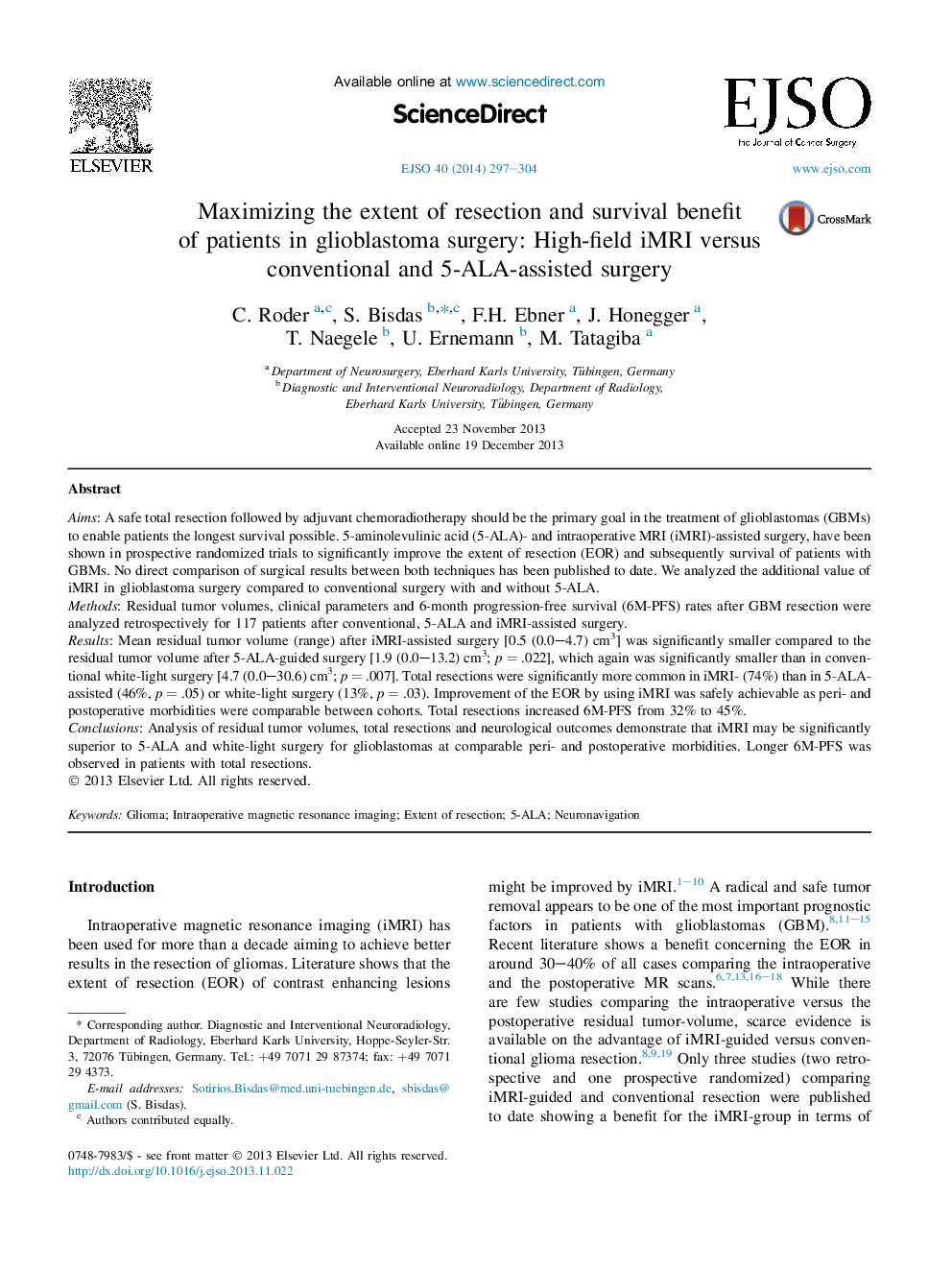| Article ID | Journal | Published Year | Pages | File Type |
|---|---|---|---|---|
| 3985118 | European Journal of Surgical Oncology (EJSO) | 2014 | 8 Pages |
AimsA safe total resection followed by adjuvant chemoradiotherapy should be the primary goal in the treatment of glioblastomas (GBMs) to enable patients the longest survival possible. 5-aminolevulinic acid (5-ALA)- and intraoperative MRI (iMRI)-assisted surgery, have been shown in prospective randomized trials to significantly improve the extent of resection (EOR) and subsequently survival of patients with GBMs. No direct comparison of surgical results between both techniques has been published to date. We analyzed the additional value of iMRI in glioblastoma surgery compared to conventional surgery with and without 5-ALA.MethodsResidual tumor volumes, clinical parameters and 6-month progression-free survival (6M-PFS) rates after GBM resection were analyzed retrospectively for 117 patients after conventional, 5-ALA and iMRI-assisted surgery.ResultsMean residual tumor volume (range) after iMRI-assisted surgery [0.5 (0.0–4.7) cm3] was significantly smaller compared to the residual tumor volume after 5-ALA-guided surgery [1.9 (0.0–13.2) cm3; p = .022], which again was significantly smaller than in conventional white-light surgery [4.7 (0.0–30.6) cm3; p = .007]. Total resections were significantly more common in iMRI- (74%) than in 5-ALA-assisted (46%, p = .05) or white-light surgery (13%, p = .03). Improvement of the EOR by using iMRI was safely achievable as peri- and postoperative morbidities were comparable between cohorts. Total resections increased 6M-PFS from 32% to 45%.ConclusionsAnalysis of residual tumor volumes, total resections and neurological outcomes demonstrate that iMRI may be significantly superior to 5-ALA and white-light surgery for glioblastomas at comparable peri- and postoperative morbidities. Longer 6M-PFS was observed in patients with total resections.
